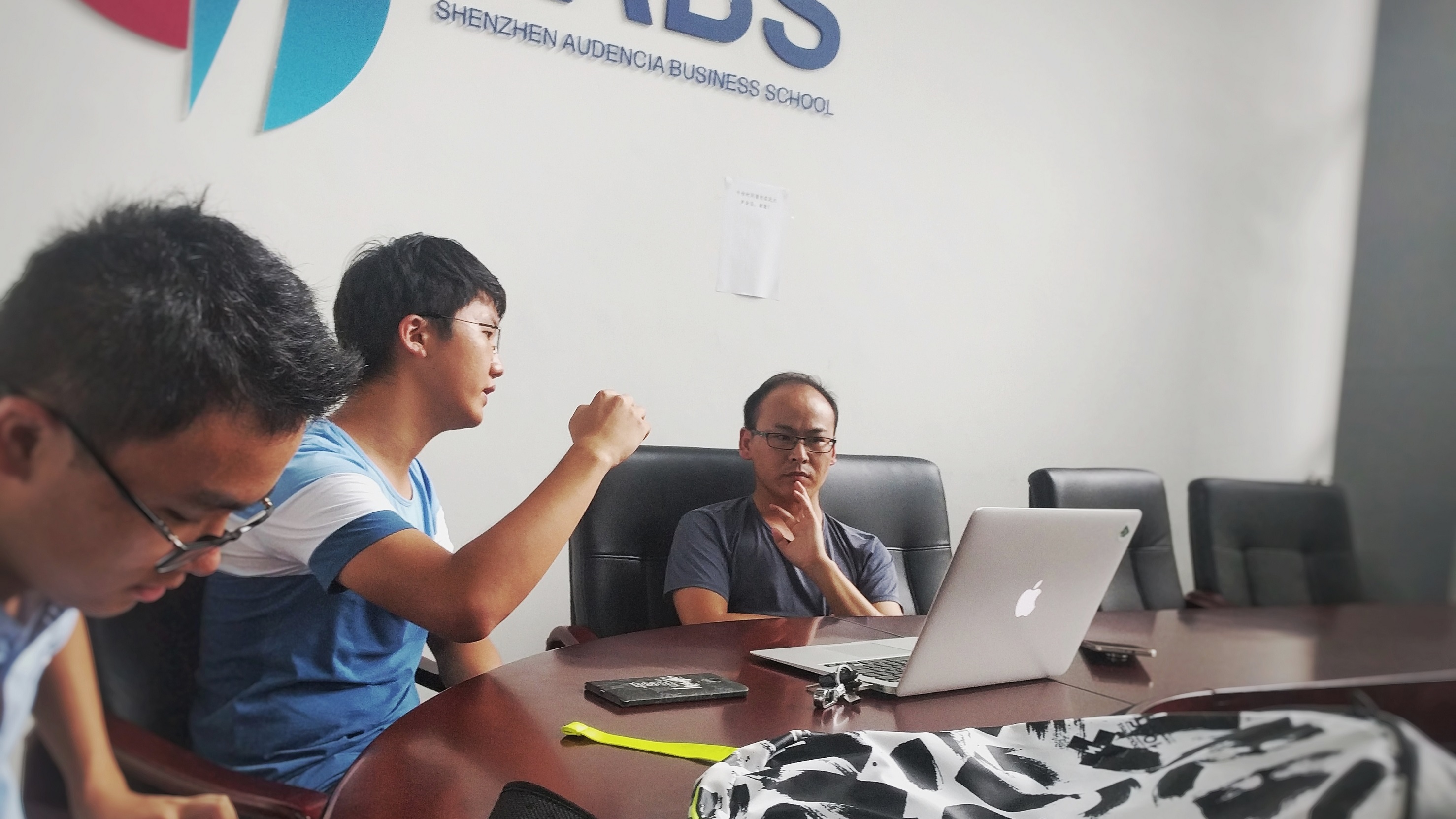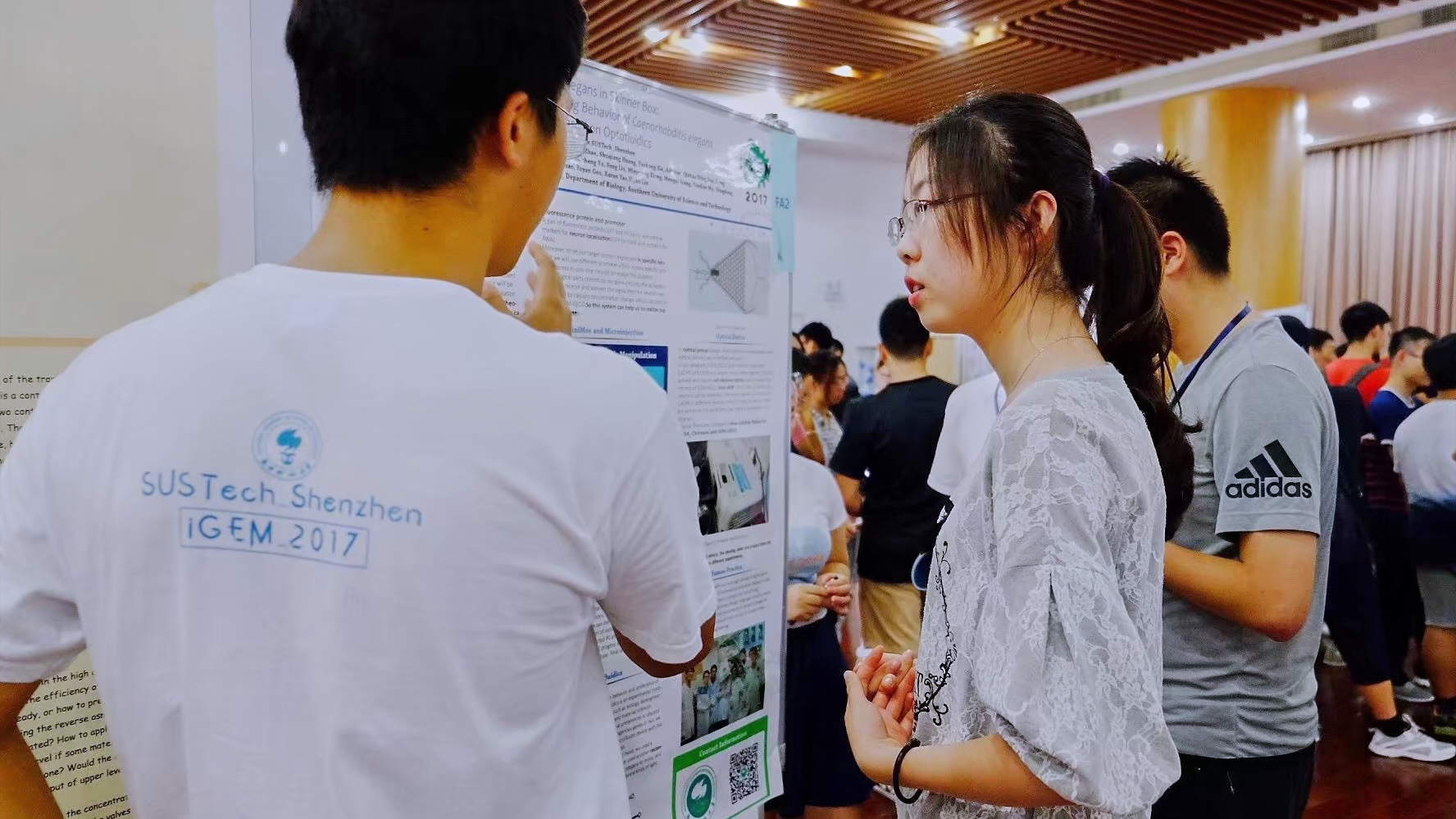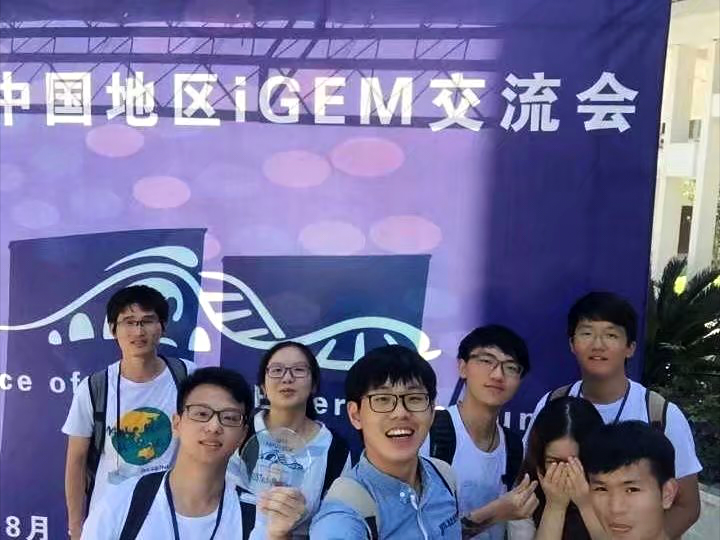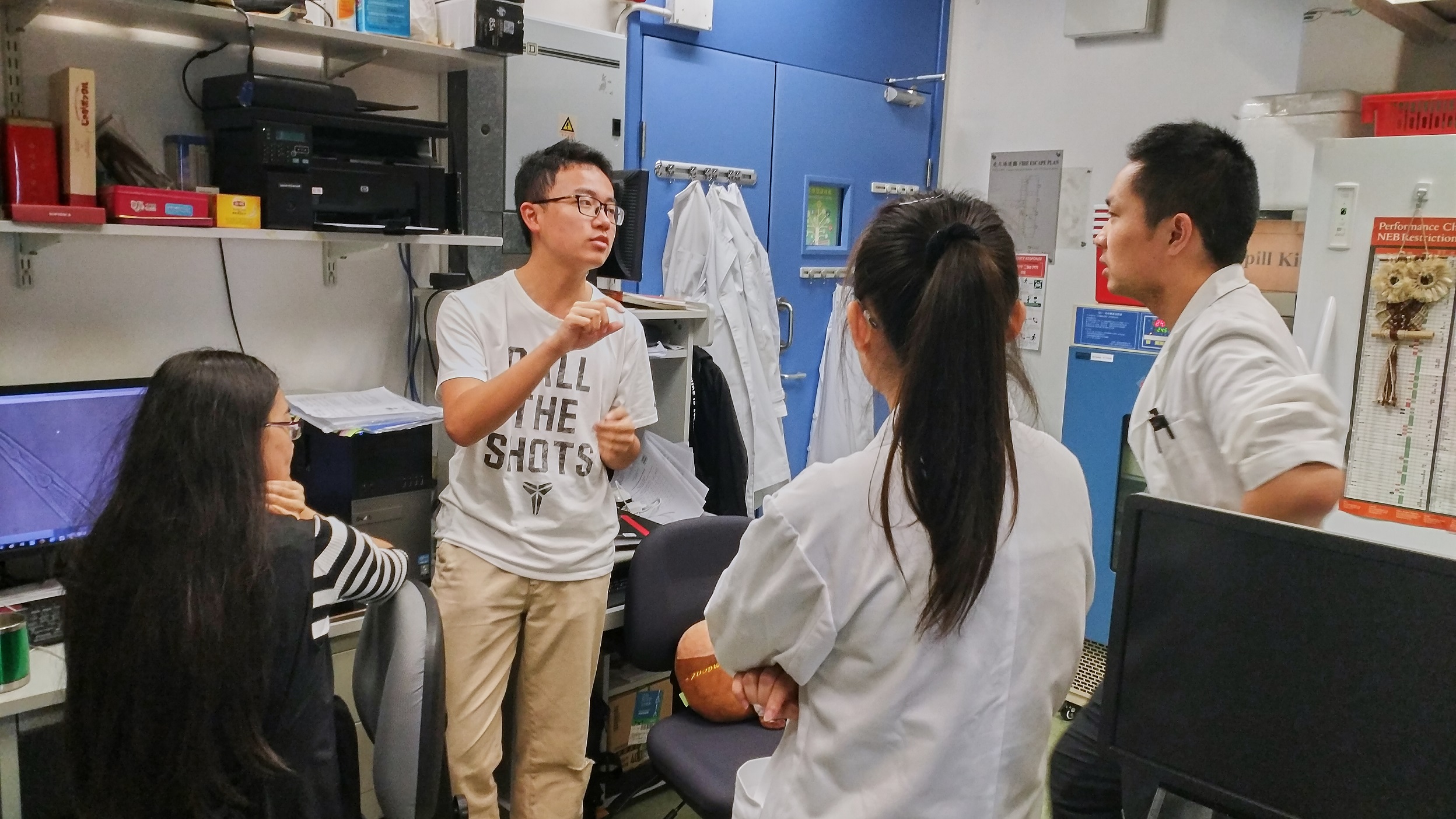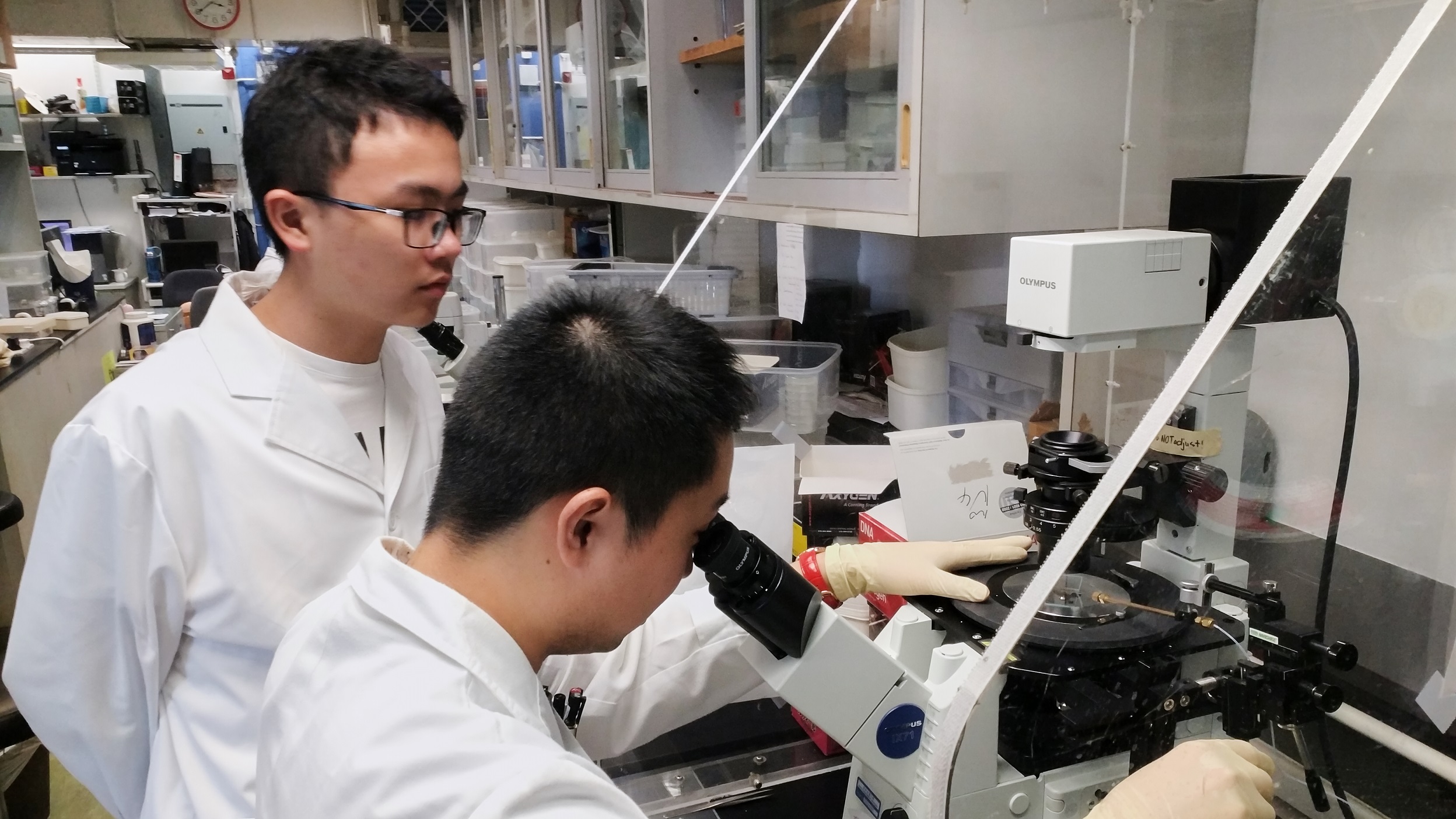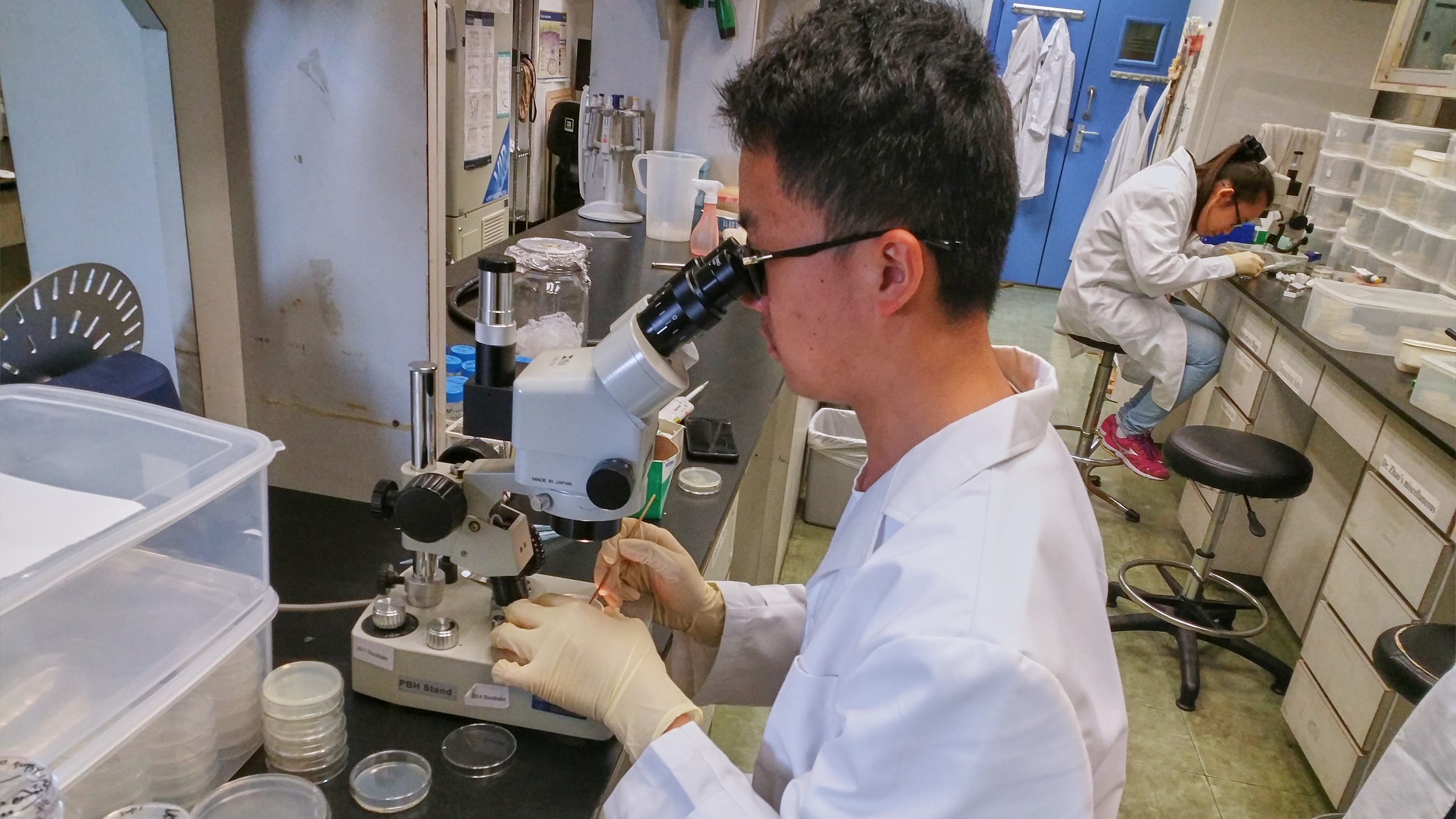Jol-Fengzi (Talk | contribs) |
|||
| (12 intermediate revisions by 2 users not shown) | |||
| Line 3: | Line 3: | ||
{{:Team:SUSTech_Shenzhen/themeCss}}<!--------整体布局,勿动-------------------------------> | {{:Team:SUSTech_Shenzhen/themeCss}}<!--------整体布局,勿动-------------------------------> | ||
| − | {{:Team: | + | {{:Team:SUSTech_Shenzhen/templates/page-header-HP-Silver|title=Our step to make a better world|subtitle=Human Practice}} |
{{:Team:SUSTech_Shenzhen/main-content-begin}}<!---------内容的样式----------------> | {{:Team:SUSTech_Shenzhen/main-content-begin}}<!---------内容的样式----------------> | ||
| − | + | <html><font size="5" face="Times"> | |
| − | Human practice activities are integrated throughout the design and execution of our project. Interaction with the public and | + | Human practice activities are integrated throughout the design and execution stages of our project. Interaction with the general public and scientific community led to many improvements in our design, such as the behavioral experiment, microinjection procedures and <i>C. elegans</i> mating method.</font> |
| − | + | </html> | |
| + | ------------- | ||
== Exchange of Ideas with Fellow Scholars== | == Exchange of Ideas with Fellow Scholars== | ||
| − | + | For the viability of the behavioral experiment design, we held a seminar with behavioral psychology professor Peng Li of Shenzhen University to get some professional advice. | |
| − | In the seminar, Prof. Li | + | In the seminar, Prof. Li pointed out the lack of an indifferent stimulus on which we can build a new behavior. He also suggested building tropism on an indifferent factor by training worms with favorite or abhorrent stimulus. That was much easier than training worms to change their pre-existing likes and dislikes. The advice we got from Prof. Li helped us correct our principles and guided us to design our new behavioral experiment. |
| − | + | In such an interdisciplinary project, a smooth communication with experts of other fields can guarantee viability of our project and prevent ourselves from wasting time. | |
| − | {{ | + | {{SUSTech_Image_Center_fill-width | filename=T--SUSTech_Shenzhen--HP-silver-8.png|width=6600px|caption=<B>Communication with department of psychology and sociology SZU </B>}} |
| − | + | ||
| − | + | ||
| + | ---------------- | ||
==Communication with Other Teams== | ==Communication with Other Teams== | ||
| − | + | During 26th,Aug and 28th,Aug this year, our team was invited to attend CCiC (Conference of China iGEMer Committee) in Fuzhou, China, to present our project among peers researchers. | |
All the 49 teams invited to the conference gave presentations and exhibited posters about their projects. During the conference, especially in the poster session, we had many opportunities to communicate with other teams and exchange ideas of our project designs. | All the 49 teams invited to the conference gave presentations and exhibited posters about their projects. During the conference, especially in the poster session, we had many opportunities to communicate with other teams and exchange ideas of our project designs. | ||
| − | {{ | + | {{SUSTech_Image_Center_fill-width | filename=T--SUSTech_Shenzhen--HP-silver-9.png|width=6600px|caption=<B> Explaining our poster in the poster session in CCIC</B>}} |
| − | + | ||
| − | + | ||
| − | + | ||
| − | + | ||
| − | + | ||
| − | + | ||
| − | + | ||
| − | + | ||
| − | + | After presenting our project on the conference, we had a short discussion with the judges, who provide us with much valuable advice. Judges raised concerns that the long-time training may result in old <i>C. elegans</i> and additional uncertainties. Therefore, we adapted their suggestions and modified our training pattern and related experiment designs. | |
| − | + | {{SUSTech_Image_Center_fill-width | filename=T--SUSTech_Shenzhen--HP-silver-10.png|width=6600px|caption=<B> Group Photo in CCIC</B>}} | |
| + | In this conference, we were enlightened about the design of our experiment. This opportunity also gave us new ideas about synthetic biology. | ||
| + | ------------------- | ||
== Collaboration with Fellow Researchers== | == Collaboration with Fellow Researchers== | ||
| − | At initial stage, we faced lots of problems on microinjection, such as low success rate and low male worms | + | At initial stage, we faced lots of problems on microinjection, such as low success rate and low male worms rate after mating. So we contacted Prof. Zhongying’s laboratory at Hong Kong Baptist University, one of the best in genetic manipulation of <i>C. elegans</i> area. We communicated with Doctor Ding on microinjection issues in Prof. Zhao’s lab. With their kind and patient instructions on our microinjection methods, we successfully inserted our parts into <i>C. elegans</i>. |
| − | {{ | + | {{SUSTech_Image_Center_fill-width | filename=T--SUSTech_Shenzhen--HP-silver-11.png|width=6600px|caption=<B> Discussing microinjection in HKBU</B>}} |
| − | {{ | + | {{SUSTech_Image_Center_fill-width | filename=T--SUSTech_Shenzhen--HP-silver-12.png|width=6600px|caption=<B> Learning Microinjection with Doctor Ding</B>}} |
| − | {{ | + | {{SUSTech_Image_Center_fill-width | filename=T--SUSTech_Shenzhen--HP-silver-13.png|width=6600px|caption=<B> Pick worms with a bamboo stick</B>}} |
Latest revision as of 02:13, 15 December 2017
Our step to make a better world
Human Practice
Contents
Human practice activities are integrated throughout the design and execution stages of our project. Interaction with the general public and scientific community led to many improvements in our design, such as the behavioral experiment, microinjection procedures and C. elegans mating method.
Exchange of Ideas with Fellow Scholars
For the viability of the behavioral experiment design, we held a seminar with behavioral psychology professor Peng Li of Shenzhen University to get some professional advice.
In the seminar, Prof. Li pointed out the lack of an indifferent stimulus on which we can build a new behavior. He also suggested building tropism on an indifferent factor by training worms with favorite or abhorrent stimulus. That was much easier than training worms to change their pre-existing likes and dislikes. The advice we got from Prof. Li helped us correct our principles and guided us to design our new behavioral experiment.
In such an interdisciplinary project, a smooth communication with experts of other fields can guarantee viability of our project and prevent ourselves from wasting time.
Communication with Other Teams
During 26th,Aug and 28th,Aug this year, our team was invited to attend CCiC (Conference of China iGEMer Committee) in Fuzhou, China, to present our project among peers researchers.
All the 49 teams invited to the conference gave presentations and exhibited posters about their projects. During the conference, especially in the poster session, we had many opportunities to communicate with other teams and exchange ideas of our project designs.
After presenting our project on the conference, we had a short discussion with the judges, who provide us with much valuable advice. Judges raised concerns that the long-time training may result in old C. elegans and additional uncertainties. Therefore, we adapted their suggestions and modified our training pattern and related experiment designs.
In this conference, we were enlightened about the design of our experiment. This opportunity also gave us new ideas about synthetic biology.
Collaboration with Fellow Researchers
At initial stage, we faced lots of problems on microinjection, such as low success rate and low male worms rate after mating. So we contacted Prof. Zhongying’s laboratory at Hong Kong Baptist University, one of the best in genetic manipulation of C. elegans area. We communicated with Doctor Ding on microinjection issues in Prof. Zhao’s lab. With their kind and patient instructions on our microinjection methods, we successfully inserted our parts into C. elegans.

